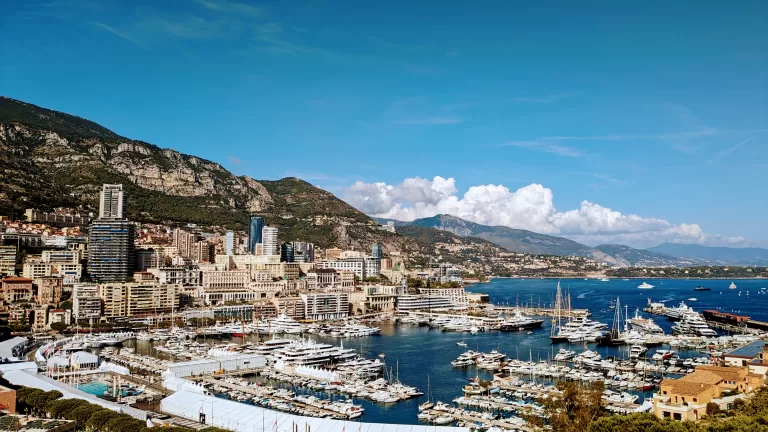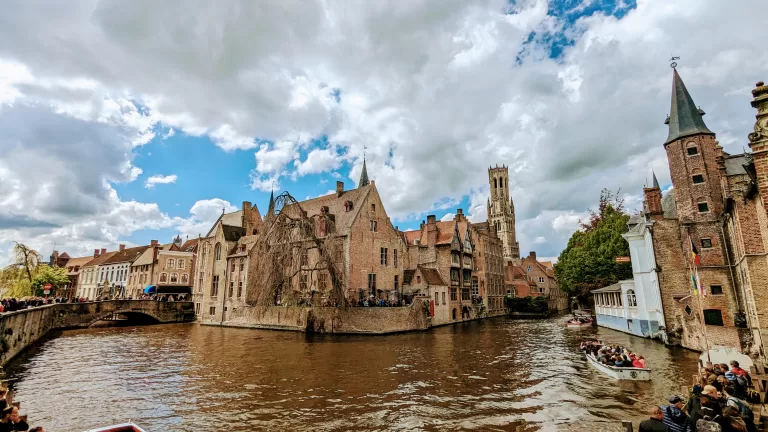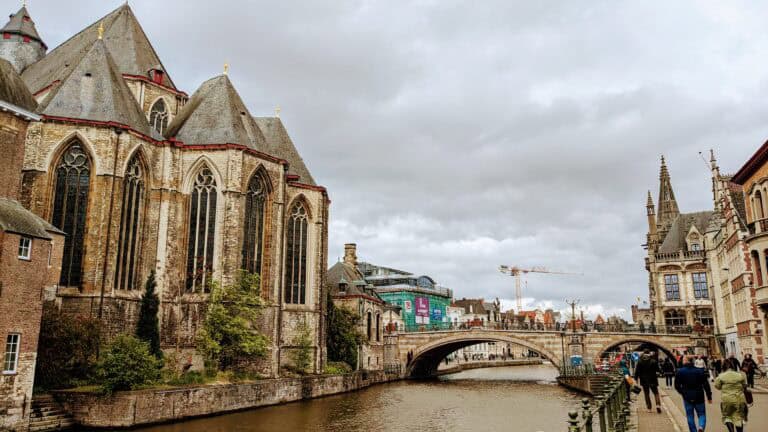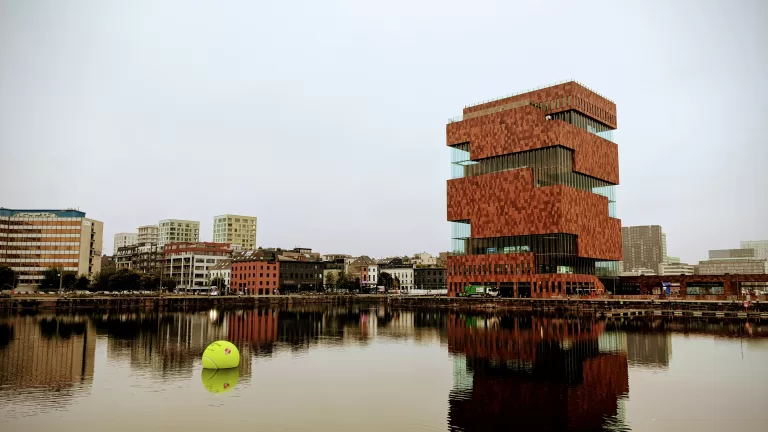Antwerp city guide: culture, beer and how to explore efficiently
Antwerp might not be as famous as Brussels or Bruges, but if you want to wander medieval squares, sip a Trappist beer by the river, and uncover some unexpected art, it’s a city worth exploring. It’s a very walkable, very liveable place that’s easy to settle into for a weekend.
We’ve spent a few weekends during our trips to Belgium, so this guide is based on our first-hand experience.
This Antwerp city guide pulls together our practical tips and local highlights to help you plan your trip. Check out our separate guide if you want to help deciding the best places to visit – like the best areas to wander, lesser-known museums, and quaint little cafés and bars.
Whether it’s your first visit or a repeat trip, this guide will help you plan a manageable, enjoyable itinerary without feeling overwhelmed.
Why Antwerp should be your next trip
If you’re wondering why choose Antwerp over Brussels or Bruges, it’s compact, walkable, and packed with a mix of history, modern architecture, and vibrant local life.
Antwerp is often flies under the radar, even though it’s ridiculously easy to get to. From London, you can be in the city centre in under four hours by train, which makes it just as doable as Paris or Amsterdam – only with a lot less crowds.
It’s has a little bit of everything: winding medieval streets, bold modern architecture, more museums and galleries than a city this size should have, and great food that doesn’t just mean Belgian waffles (although, yes, they’re here too). You can spend the morning wandering through the old town, have lunch by the Scheldt river, and be sipping a Trappist beer by the afternoon.
Because it’s so well connected, Antwerp slots easily into a bigger trip. You can pair it with Ghent, Bruges, or even hop over to the Netherlands, but it’s got enough going on to visit on it’s own as a long weekend away.

How many days do you need in Antwerp for a city break?
Most visitors find that three days gives a solid overview, but if you have 5+ days, you can explore neighbourhoods like Zurenborg and take day trips to Ghent or Bruges.
Three days is usually enough to get a proper feel for the city. You’ll have time to explore the main sights, try local food, and wander around without rushing. Our guide to the best sites to explore in Antwerp will help plan your itinerary.
Extra days come in handy if you want to spend more time in museums or take short trips to nearby towns. Check out our guide to all of Antwerp’s museums (23!).
Quick stay guide
- 24 hours: Wander the Old Town, visit Cathedral of Our Lady, and grab a beer by the Grote Markt. If you’re short on time, focus on the main square and pick one museum to see – it’s the most efficient way to see Antwerp in a day.
- 3 days (recommended): Day 1: Old Town and Rubenshuis; Day 2: MAS + riverfront walk + Eilandje; Day 3: cycle through Het Zuid, visit a museum or relax in a café.
- 5+ days: Consider a day trip to Ghent or Bruges, or spend extra time exploring art galleries and local bistros in Zurenborg. This is also a chance to explore Antwerp’s trendy districts, like Het Zuid or Eilandje, without rushing.
Where should you stay in Antwerp?
Antwerp has a few different neighbourhoods, each with its own vibe.
The Historic Centre (Centrum)
This is the heart of the city, full of medieval architecture and bustling squares. You’re close to the Cathedral of Our Lady, the Grote Markt, and most main attractions.
It’s perfect for first-time visitors, but it can be busy and a bit pricier.
Het Zuid (South)
Het Zuid is just outside the old town and still an easy walk in. It feels more relaxed and artsy that the old town.
It’s known for its art galleries, museums (like the Royal Museum of Fine Arts Antwerp), and has some great restaurant and bar options which feel a bit more authentic than the tourist bars in the old town.
Eilandje (Island)
The former docklands area is now a modern waterfront district with a mix of modern and traditional architecture, trendy bars, and the brilliant MAS (Museum aan de Stroom).
It’s a good choice if you want somewhere a bit more contemporary and don’t mind being slightly outside the city centre. It can feel a bit sterile compared to the historic centre, but it’s a good option if you want somewhere quieter.
View and book some of the best hotels in Antwerp.

How do you get to Antwerp?
By train
Antwerp Central Station is a major railway hub. Direct trains run from many European cities, including Paris, Amsterdam, and Brussels.
The train station itself is worth seeing, often listed among the world’s most beautiful train stations because of its grand main hall.
From London, you can take the Eurostar to Brussels (3.5 hours) and then connect to Antwerp (45 minutes). Our guide to taking the Eurostar to Belgium will help you.
From Antwerp Central Station, it’s a short walk (about 15 minutes) to the city centre.
Alternatively, you can take tram lines 3, 5, 9 or 15. These run directly from the station to various points in the centre. Taxis are also available outside the station.
By air
Antwerp Airport (ANR) is a small airport located just outside the city. It offers flights to a limited number of destinations, mainly regional European destinations. You can take a bus or taxi to the city centre, which is just a 15-minute drive away.
Antwerp Airport has limited flights and so you’re far more likely to fly in to Brussels Airport (BRU). It is about 45 km (28 miles) away and offers more international flights.
From Brussels Airport, the easiest way to reach Antwerp is by the direct train connection to Antwerp Central Station. The journey takes around 30 minutes. You can buy paper tickets from machines in the train station using debit or credit card (tickets cost about €9 one-way).
By car
Antwerp is easily accessible by car via the E19 motorway from Brussels and the Netherlands.
- From the UK: You can take a ferry to Calais or Dunkirk. Drive to Antwerp from there. The drive takes around 3-4 hours.
- From Bruges: Take the E17 motorway. The journey takes about an hour.
- From Brussels: Take the A1/E19 motorway. The drive takes around 45 minutes.
Tip: Antwerp has a Low Emission Zone (LEZ). You may need to register your car online before entering the city centre. Parking can be expensive and limited, so consider using park-and-ride facilities.
How do you get around Antwerp?
Cycling and walking
Antwerp is a small city and so we only ever walked everywhere – it’s a great way to see the city. Most of the main sights are within a 20 minute walk from each other.
Antwerp is a very bike-friendly city with dedicated cycle lanes. There’s loads of places to rent a bike for the day.
Public transport
We didn’t end up using public transport once we’d arrived, as we walked everywhere.
If you do need it, trams and buses cover the city well.
You can buy single tram/bus tickets at vending machines at tram and bus stops for around €3 – €4, or use contactless (card/phone).
The De Lijn Day pass (around €7) gives you unlimited travel within the city – but, you’ll need to work out whether you’d make any saving over ‘pay as you go’.
The De Lijn app is helpful for planning your journey and buying tickets online.
Taxis and car shares
Taxis are readily available throughout Antwerp.
You can hail them on the street or find them at taxi stands.
Uber is also available in Antwerp, however, it may be more expensive than local taxis.

When should you go to Antwerp?
The shoulder seasons – April to May and September to October – are ideal. The weather is pleasant and the crowds are smaller.
Summer (June-August) can be hot and busy. Winter (November-March) can be cold and damp. However, Antwerp’s Christmas market has rave reviews.
Antwerp has several events throughout the year including the Antwerp Fashion Festival and the Rubens Market. Check the city’s event calendar to see what’s on during your visit. Antwerp is small, so hotel prices go up during events – if you’re not interested in the event then you may want to visit another time.
What should I do in Antwerp?
Antwerp has so much to offer! Our favourites were:
- The Old Town: wander around and enjoy the architecture and pretty streets. Grab a beer or a coffee and watch the world go by.
- The Cathedral of Our Lady: An amazing Gothic cathedral which looms over the city.
- The Grote Markt: The city’s main square, surrounded by beautiful guildhalls and with the Brabo Fountain in the middle.
- The Rubenshuis: The former home and studio of the famous painter Peter Paul Rubens.
- The MAS (Museum aan de Stroom): A modern museum with panoramic views of the city.
Check out our guide to our favourite places to go in Antwerp for our top recommendations.
What should I pack to visit Antwerp?
Pack comfortable walking shoes. You’ll be doing a lot of exploring on foot.
Layers are always a good idea, as the weather in Belgium can be unpredictable.
A waterproof jacket or umbrella is essential, especially if you’re visiting during the spring or autumn.
How can I be more sustainable when I visit Antwerp?
Antwerp is making efforts to become a more sustainable city. Here are a few ways you can travel more responsibly:
- Walk or use public transport/bike: Antwerp has an excellent public transport system and plenty of bike lanes. Using a bike rental like Velo Antwerp makes exploring eco-friendly and fast.
- Support local businesses: Eat at local restaurants and shop at independent stores.
- Bring a reusable water bottle: Refill it at water fountains throughout the city (you can drink the tap water).
- Choose eco-friendly accommodations: Look for hotels or guesthouses with sustainability certifications.
- Respect the environment: Avoid littering and dispose of waste properly.
Find out more ideas to travel sustainably.

What else should I know about Antwerp?
Anvers is the French name for Antwerp – had we known this then getting the train would have been a lot easier (‘we want to go to Antwerp, not Anvers…’).
Antwerp offers a city card which gives free entry to 16 attractions, discounts to others, and free public transport. Like all city cards, you’ll need to work out whether you’ll use it enough to make it worth it.
A lot of museums and other attractions close on Mondays, so bear that in mind when planning your visit.
So when are you visiting?
Antwerp is a city that you’ll love, with its unique blend of history, culture, and modernity.
It’s easily accessible, easy to get around, and has a fun nightlife. It’s also easy to get to, so perfect for a long weekend away or as part of a tour of Belgium.
If you want detailed itineraries, check our guide to the best things to do in Antwerp or explore more Belgian destinations. If you want to make your next trip a bit more sustainable, see our sustainable travel tips.
This page contains affiliate links. If you make a purchase through one of these links we make a small commission to help run this site, at no cost to you. Making a commission never affects the advice we give - see our content policy.







